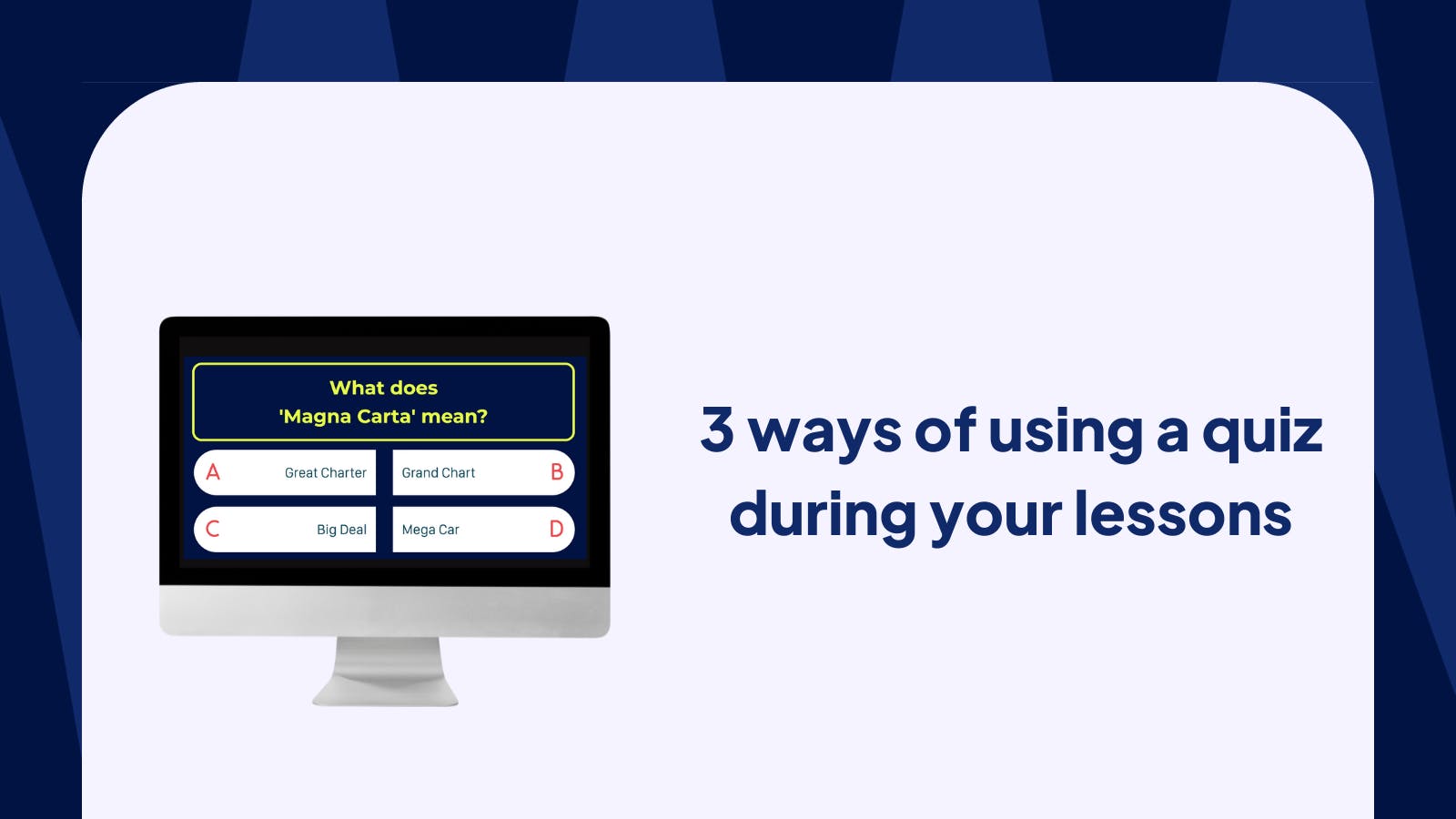Guide and monitor your students all the way- applying Rosenshine's principles
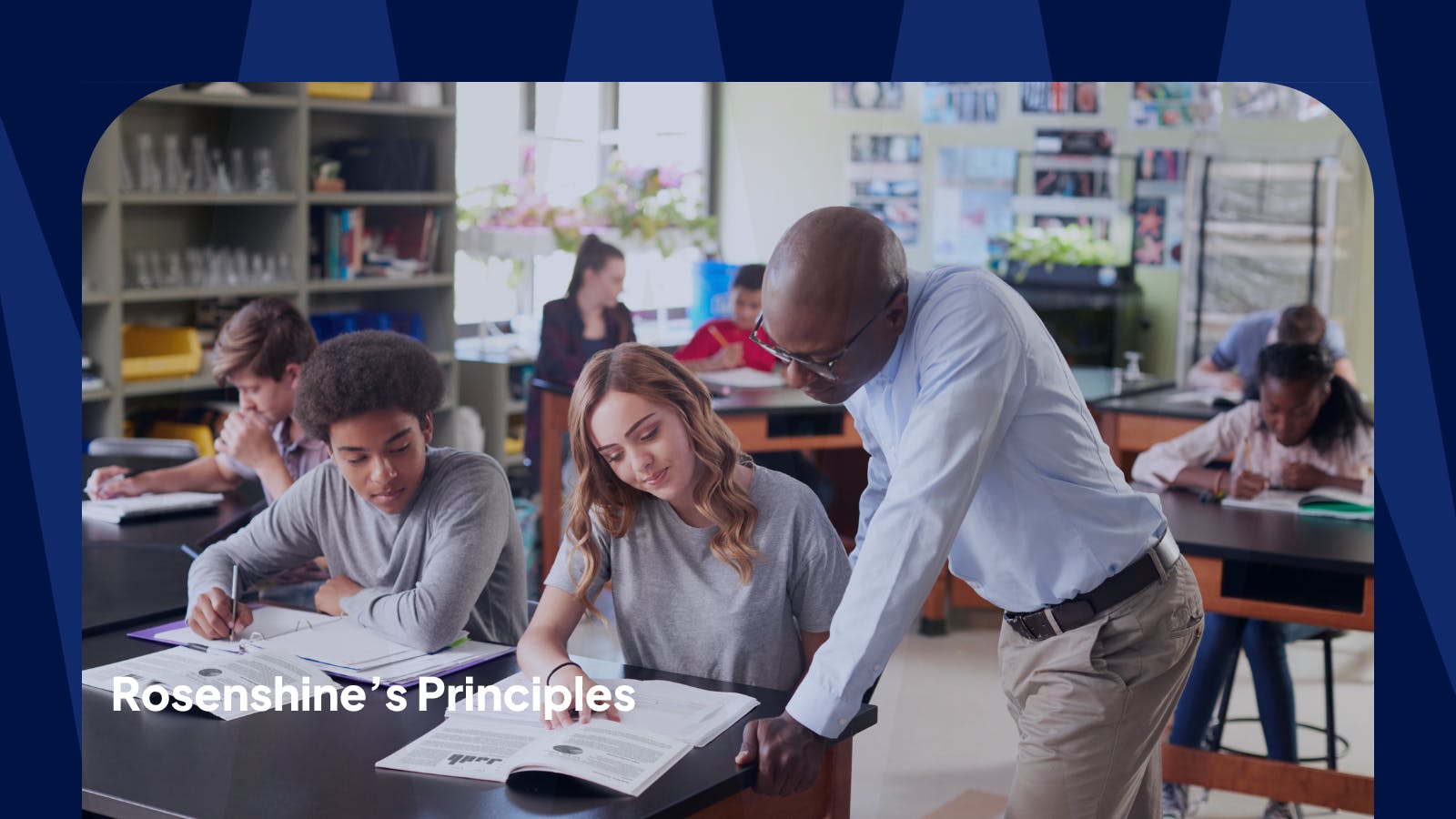
Monitoring student learning, providing feedback, and adjusting your instruction accordingly is a continuous process embedded in all your lesson plans. Here are three learning techniques to assist you in applying Rosenshine's Principles while guiding and monitoring student practice.
Learning techniques 👉 guiding & monitoring student practice
Which Rosenshine principles are applied in the following three learning techniques?
- Guide student practice (principle 5)
This principles highlight the importance of providing students with enough time to ask questions, practise retrieval, or receive the help they need in order to do so. It’s not enough for a student to learn information once, they have to keep rehearsing it through summarising, evaluating, or applying their knowledge.
- Provide scaffolding for difficult tasks (principle 8)
When introducing students to more complex material, Rosenshine suggests using scaffolding in your lessons. Scaffolding is when you facilitate students’ gradual mastery of a concept or skill by gradually reducing your assistance.
- Require and monitor independent practice (9)
Although guiding student practice is important, your students should also be able to complete tasks independently and take responsibility for their own learning. To help them become more independent and driven, you can encourage your students to:
- Develop a sense of purpose.
- Collaborate with others within a group.
- Think reflectively.
- Set their own goals.
1. Word wheel
A small, simple puzzle can be quite complex at times. Especially when coupled with learning material. A word wheel is in its essence a compact puzzle that your students can solve individually, or in groups of two or three.
The goal of working with a word wheel is for you to create, and for your students to spot, as many combinations as possible. It doesn’t matter what you ask your students to combine: letters, numbers, etc. Everything is possible. What matters is that students use the number or letter indicated in the centre of the wheel to resolve the puzzle.
This learning technique is applicable to all subject, and during all phases of a lesson. It could be an interesting technique to implement during a test or an exam, as a bonus question.
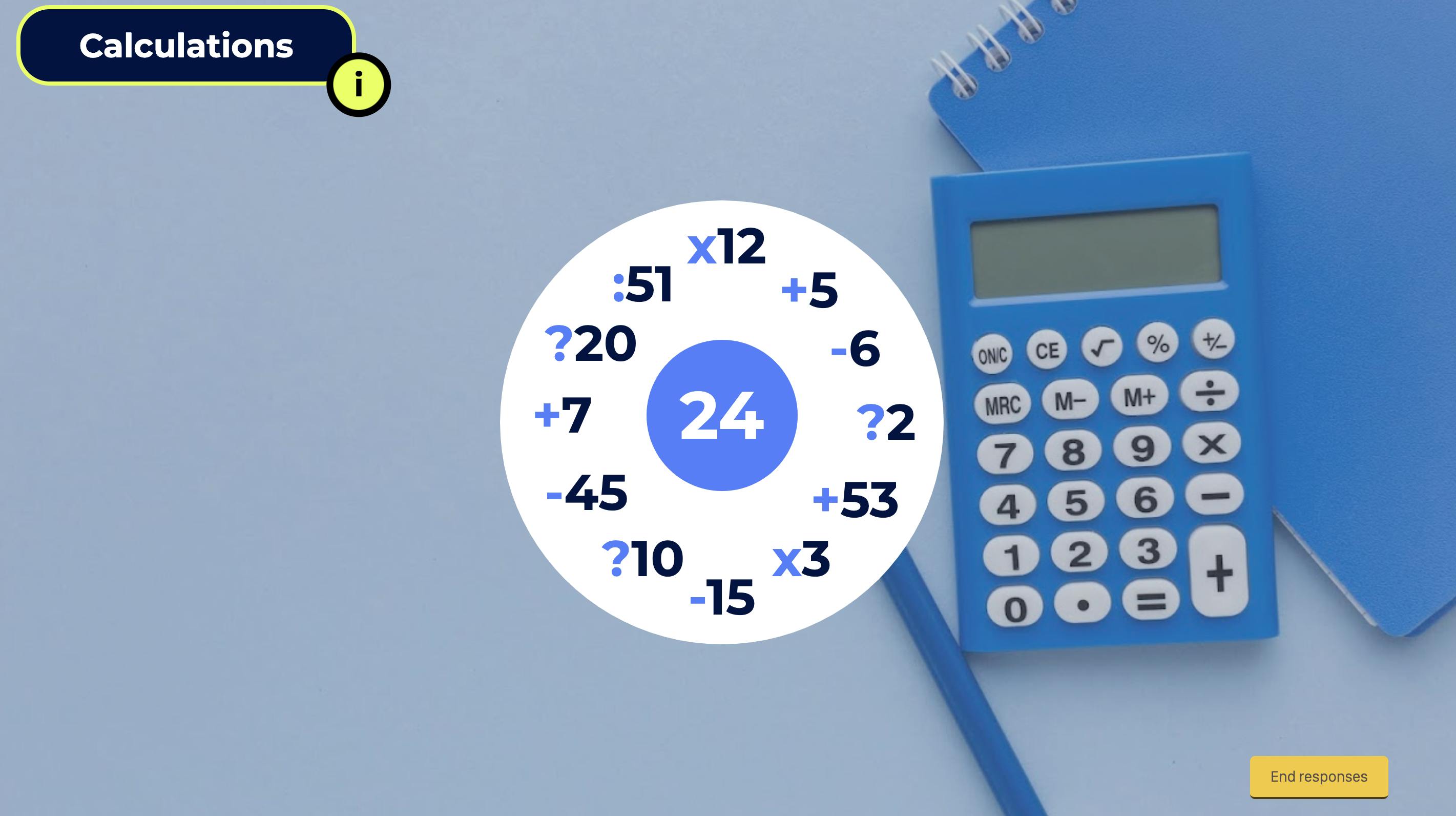
A digital word wheel works the best
To implement this learning technique during a LessonUp lesson, you can use a digital mind map and the symbol component. By combining these two features, you can create a structure with an internal centre, and an external wheel gravitating around it.
By using the textual component, indicate a letter or number in the centre, and then proceed by writing all the other letters/numbers in the external wheel. For an extra challenge, you could add a timer with a set time limit for resolving it.
2. Observe, discuss, draw… and observe again!
You are always searching for visuals related to your subject. Images leave a strong impression on your students, stimulating curiosity and boosting engagement. But how do students observe an image? Do they notice all its details, or does that require more than just a brief glance?
This learning technique is perfect to practice 'seeing' while looking at something. It also works on students’ communication skills, and on their ability to perform under pressure.
How does it work?
Divide your students in groups of three or four. In each group, number your students from one to four. Provide them with pencils, an eraser, and a white sheet of paper.
All student number ones study the image for 20 seconds, then return to their team to explain what they saw. The team then tries to replicate the image. After a minute, student number twos do the same, followed by the threes, and so on. After everyone has had a turn, each group has 5-10 minutes to reproduce the image.

Connect to your students' world
Nowadays teachers don’t challenge their students exclusively with raw subject-related content, but they try to create a connection with the students’ world. Maths and geometry teachers, for example, might use this learning technique to show photos of famous buildings constructed following mathematical and geometrical formulas. After the assignment, while discussing it with your class, remember to focus also on the process, and not only on the resulting drawings. How was the teamwork and the communication flow? Which strategy did your students follow to replicate the image?
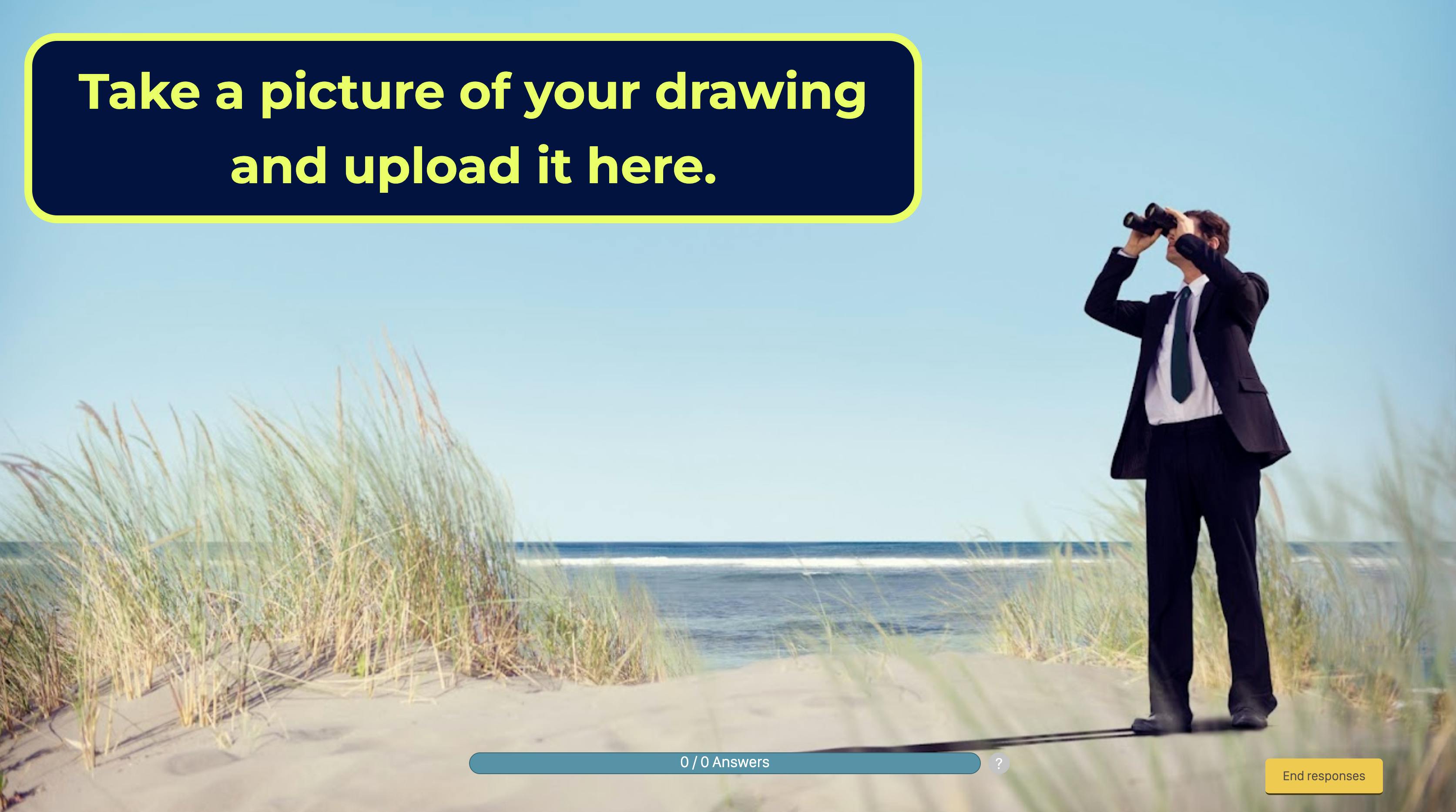
Upload student drawings to create a group discussion
To implement this learning technique with LessonUp you can create a lesson with three slides and a photo question. Insert the chosen photo in a slide, in between two black slides, and set the timer component to 20 seconds. At the end of the assignment, the student teams can upload their drawings within the photo question. Together with the rest of the class, you can discuss the resulting creations, how they experienced the teamwork process, and the strategy chosen by each team.
3. Match a question to this answer…
One of the best ways to understand a new topic is to ask questions about it. This is true for everybody, especially for students who are preparing for an assessment, or simply reviewing a lesson. Curiosity and question asking helps memorise new concepts.
With this learning technique, students are shown a word or sentence concerning a certain topic, and they have to think of a relevant question to this answer. 'Match a question to this answer' is perfect for subjects such as history or geography, but could also be applied to maths, modern languages, and other subjects—in the classroom, or as homework.
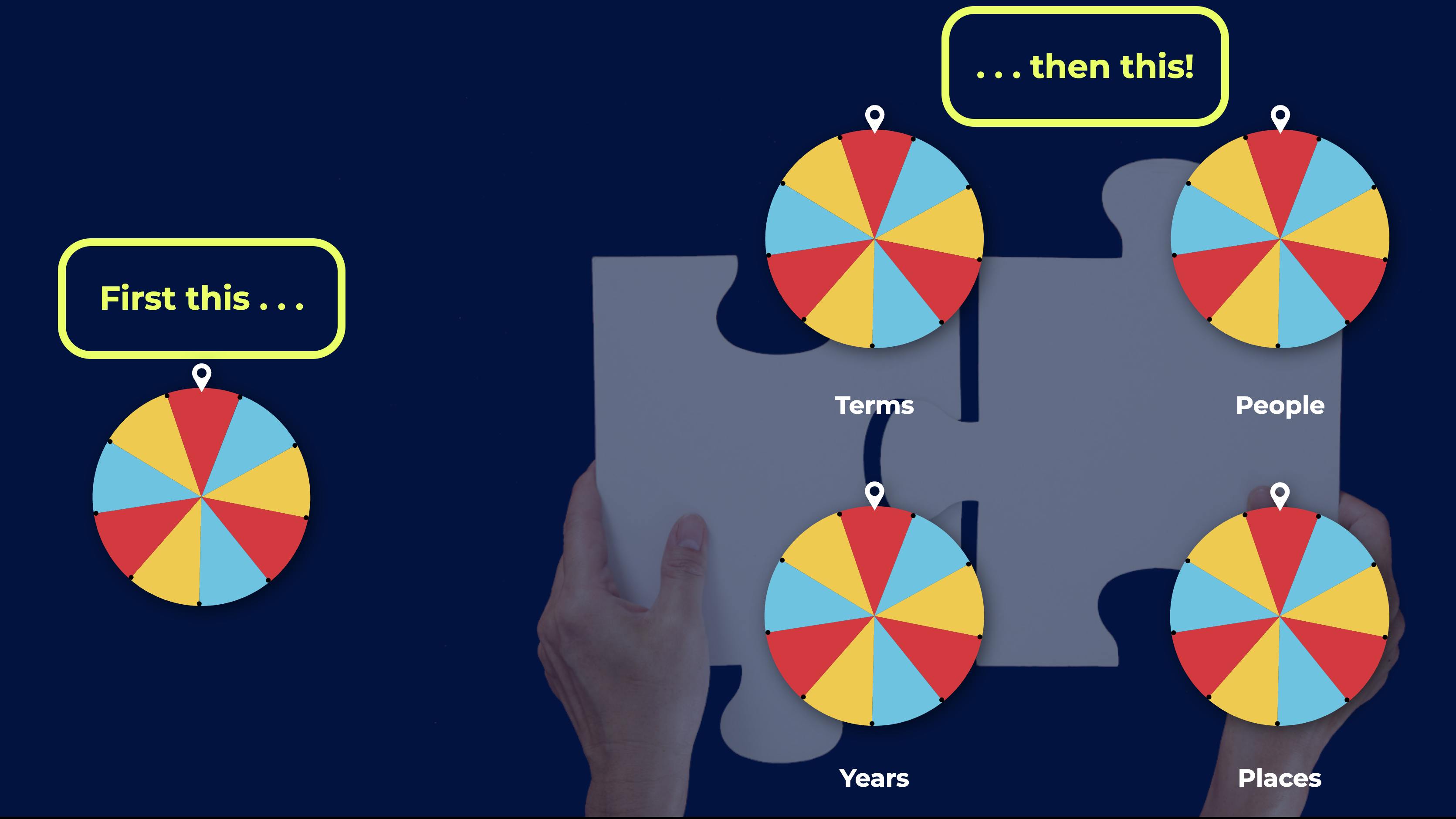
Spin your class towards memorising new concepts
Use a number of spinners to apply this learning technique with LessonUp.
Spin the first spinner to choose which category your students are going to work with. The sections of this spinner could indicate, for example, the following categories: concepts, years, people, and places. For each category prepare another targeted spinner. For the category 'places', you may spin the relevant spinner and get the following answer: 'Saint Helena'. Your students have to think of a possible question to match this answer: 'Which island was Napoleon banished to?'
Want to apply Rosenshine's principles in your classroom? Discover how easy it is to gather student feedback with LessonUp—Gather student feedback in engaging ways.



